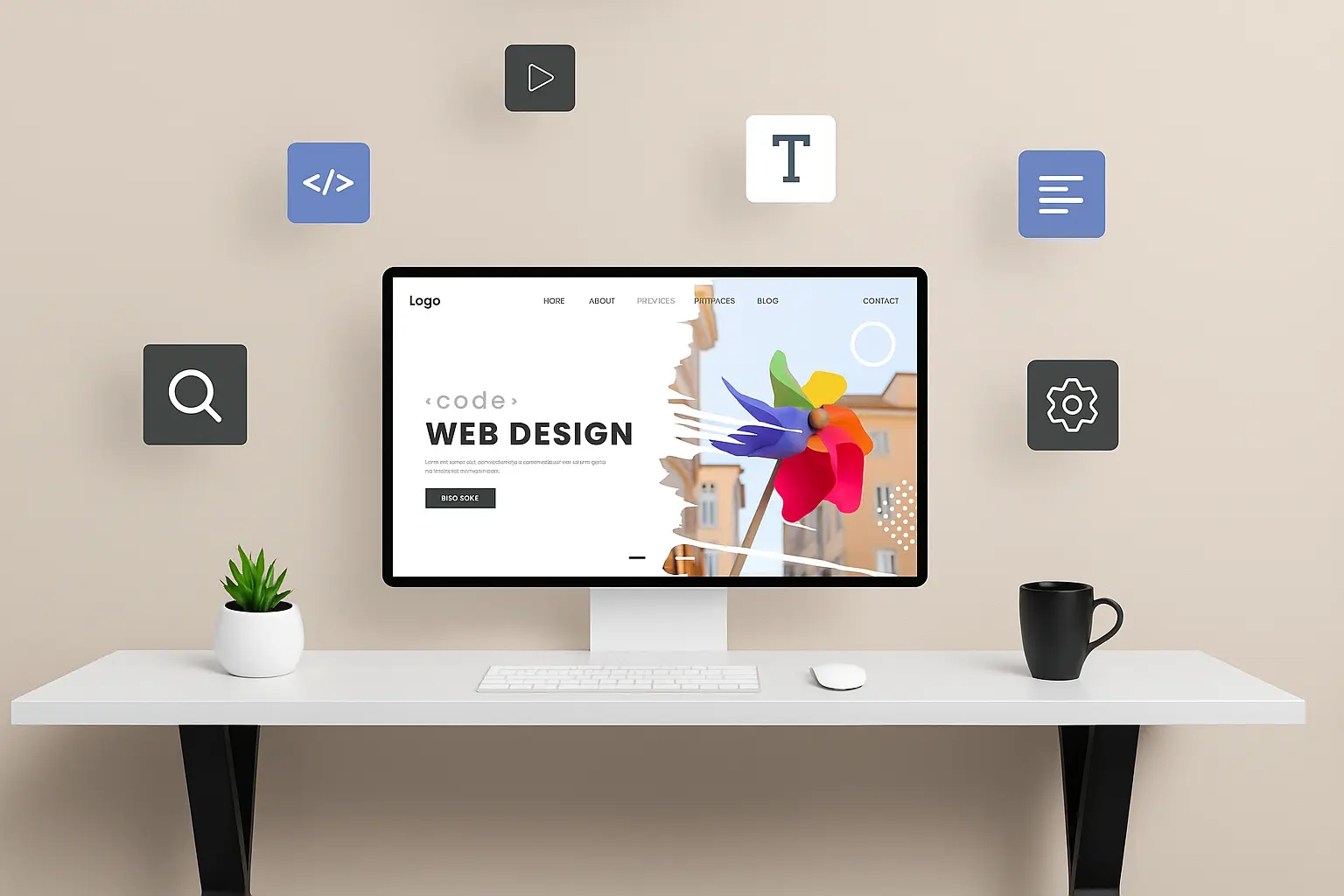In the past, creating a professional website required advanced coding knowledge and a team of developers. Today, no-code website builders have transformed this process, allowing anyone, from freelancers to small business owners, to build stunning, functional websites without touching a single line of code.
These platforms combine drag-and-drop editors, responsive design, AI-powered website creation, and built-in SEO tools, making web design both efficient and accessible. This guide explores the top software options, their features, and how to choose the right platform for your needs.
What Are No-Code Website Builders?
No-code platforms are web development tools that allow users to design, publish, and manage websites without coding. These platforms provide visual web design interfaces and integrate with content management systems (CMS) to streamline the building process.
Users can drag elements onto pages, customize templates, optimize for search engines, and add advanced features like e-commerce and AI chatbots. They cater to freelancers, small businesses, e-commerce owners, and creatives who want to launch professional websites quickly while maintaining flexibility and control.
Key Features to Look for in Website Design Software
When selecting a no-code website builder, it is crucial to consider the depth of its features. A truly effective platform offers an intuitive interface that allows beginners to navigate easily while providing advanced design options for more experienced users. Drag-and-drop editors and visual web design tools enable precise customization of layouts, fonts, colors, and interactive elements.
Platforms should also offer customizable templates, responsive design for mobile and desktop, SEO optimization tools, and AI-assisted features that suggest layouts or content improvements. Additionally, strong e-commerce capabilities, integrated hosting services, domain management, robust analytics and reporting, and third-party integrations enhance the overall functionality and growth potential of your website. Security features like SSL certification, multilingual support, and content delivery networks (CDNs) are also essential for performance, accessibility, and trustworthiness.
Benefits of Using No-Code Website Builders
The main advantage of no-code platforms is the ability to build websites faster and at a lower cost compared to traditional development. Users can update content, add new features, and redesign pages without developer assistance.
Platforms often include SEO optimization tools to improve online visibility, and integrations with analytics dashboards and AI chatbots help monitor performance and enhance user engagement. No-code builders also allow for scalability, meaning your site can grow as your business or project expands without needing a complete overhaul.
Top No-Code Website Design Software
Wix
Wix is an ideal choice for beginners, offering a highly intuitive drag-and-drop editor and hundreds of customizable templates across various industries. The platform includes robust SEO tools, integrated hosting, e-commerce functionality, and marketing automation options. Users can quickly set up websites ranging from blogs to online stores, making it a versatile solution for small businesses and personal projects.
Webflow
Webflow is a professional-grade platform designed for designers and developers who need fine control over layouts, animations, and interactions. It combines CMS capabilities, scalable hosting, and advanced SEO tools. Webflow is particularly suited for businesses that require responsive, high-performance websites with complex structures or intricate design requirements.
Framer
Framer emphasizes AI-powered website creation and rapid prototyping, offering modern templates and automated design suggestions. It is well-suited for creative professionals who want fast iterations, interactive pages, and cutting-edge design tools, though its e-commerce capabilities are limited compared to dedicated platforms.
Siter.io
Siter.io provides a budget-friendly, user-friendly interface with straightforward drag-and-drop editing. Its responsive templates and basic SEO tools make it perfect for freelancers, bloggers, and small websites that need a simple, quick-to-launch solution without unnecessary complexity.
Wocode
Wocode combines AI-assisted design with full e-commerce integration and a flexible drag-and-drop builder. It is ideal for businesses that want to leverage AI for website creation while maintaining robust online sales capabilities. The platform provides responsive templates and fast hosting, streamlining the setup and management process.
WordPress
WordPress is the most widely adopted CMS in the world, offering unparalleled customization through themes and plugins. While it requires more setup than some no-code builders, it allows complete control over website functionality, design, and scalability. It is suitable for blogs, corporate sites, and large-scale e-commerce operations.
Elementor
Elementor is a drag-and-drop page builder plugin for WordPress, enabling real-time visual editing. It allows users to design flexible, fully responsive pages without coding while leveraging WordPress’s powerful CMS backend. Elementor is highly regarded for creative freedom and custom layout options.
Squarespace
Squarespace focuses on delivering elegant, responsive templates with integrated hosting and e-commerce tools. It is especially popular among creatives and small business owners due to its visually appealing design options, ease of use, and all-in-one platform that minimizes technical setup.
Bubble
Bubble enables the creation of fully custom web applications without coding. Its platform supports complex workflows, database management, and dynamic page interactions, making it ideal for startups or businesses that need robust web apps rather than standard websites.
Unbounce
Unbounce specializes in high-converting landing pages. It offers drag-and-drop editing, A/B testing, and seamless integration with marketing tools, making it ideal for marketers focused on lead generation and conversion optimization rather than full-site creation.
Dorik
Dorik is a lightweight, straightforward builder perfect for small websites, landing pages, or startups. It provides pre-designed templates, fast hosting, and a minimal learning curve, making it easy for users to launch sites quickly while maintaining a professional look.
Shopify
Shopify is a dedicated e-commerce platform with comprehensive tools for online stores, including drag-and-drop editors, payment gateway integration, inventory management, and shipping logistics. It is scalable for businesses of any size and provides a strong ecosystem of apps and extensions for customization.
How to Choose the Right Platform
Choosing the right platform depends on your project goals. Beginners and small businesses may prioritize ease of use and fast deployment, while larger businesses or tech-savvy users may need advanced customization, scalable CMS functionality, and robust integrations. Consider e-commerce needs, multilingual capabilities, SEO requirements, and the ability to scale your website as your business grows.
Practical Tips for Building a No-Code Website
Begin with pre-designed templates to save time, ensuring they are fully responsive for mobile devices. Focus on SEO optimization to improve search visibility. Use analytics to track website performance and make data-driven adjustments. Incorporate interactive tools like AI chatbots to engage visitors, and regularly test your website to maintain optimal speed, performance, and user experience.



